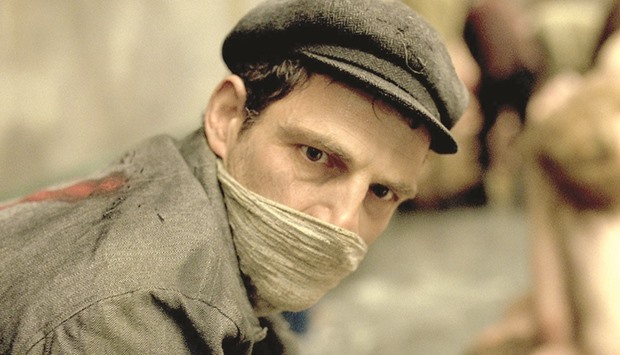As the year closes, one pauses to ponder over the dozens of movies one has seen in all these months. And here are my favourite 10 in languages other than Indian.
Iranian director Jafer Panahi’s Taxi was a film made in cocky defiance of the mullahs — who have been keeping the helmer under a 20-year work ban. But in the five years that the restriction has been in force, Panahi made three movies. The latest is Taxi, which was smuggled into the Berlin Film Festival last February and where it won the Golden Bear.
Taxi is multi-layered. With Panahi himself playing a cab driver, he cruises his taxi through the streets of Teheran picking up passengers and having conversations with them. He captures these with a small camera placed on the dashboard. A movie that is much a rebuke to Iran’s dictatorial leadership as it is a celebration of artistic freedom.
Also about shackled liberty and rebellion against it is Gamze Erguven’s Mustang — which through a Turkish story of five sisters denounces the move to keep women in social fetters. The galloping sexuality of the girls, just out of school in a remote Turkish village, is brutally censored by their unfeeling uncle, who becomes their guardian after the death of their parents. But the sisters find amazing ways to escape their social incarceration that among things stops them from meeting boys.
Documentary filmmaker Mai Masri’s first feature, 3000 Nights, is also about imprisonment — more real and more brutal than that of the Mustang sisters. A heart-rending account of a young, newly-married Palestinian woman’s life in an Israeli jail, 3000 Nights begins with the woman being falsely accused of helping a wounded revolutionary. When she finds she is pregnant, she refuses to abort the foetus and goes ahead to give birth to a boy in jail. A powerful symbolism of the importance of personal rights and individual choices/freedom.
Strangely, there seems to have been many movies about suffering women this year, and they seem to have wormed their way into my list of favourites. Lenny Abrahamson’s Room is a deeply moving account of emotional and physical survival that has been adapted from Emma Donoghue’s 2010 bestselling novel. Driven by nuanced and impressive central performances, poignant and controlled, Room follows the dark story of five-year-old Jack (Jacob Tremblay), who lives happily with his mother — whom he simply calls Ma (Brie Larson). But, they are held captive by a man, who kidnapped ‘Ma’ seven years earlier. The only world Jack knows is the shed they are kept in or ‘room’ as he calls it. That is until they plan an escape and their world changes yet again. The film interestingly weaves into its narrative issues such as social ostracism of a child born out of rape.
Getting away from women, Jacques Audiard’s Dheepan is a riveting work about the Sri Lankan civil war that clinched the Palm d’Or at Cannes last May. Dheepan opens with a funeral pyre which seemingly indicates that Sri Lankans and the nation itself want to lay to rest the inglorious past —laced with rancour and revenge. Audiard’s is a story of a former Tiger — part of the Vellupillai Prabhakaran’s Liberation Tigers of Tami Eelam, which fought for a separate homeland for the Tamil-speaking minority in the country. But Dheepan (Antonythasan Jesuthasan) does not want to have anything to do with even the memory of the war. He cremates his former comrades, burns his own uniform before seeking political asylum in France, and to make this look authentic, he finds a woman, Yalini (Kalieaswari Srinivasan), to act as his wife and Illayaal as their daughter to make the family complete. However, when they settle down in a Paris suburb, peace does not come easily to them. The place is infested with drug peddling, gun-totting gangs whose bullets and bravado disturb Yalini and the little girl even as they try desperately to shake off their messy past.
War again, the Holocaust this time with Laszlo Nemes’ Son of Saul — which is more specifically about Sonderkommando, a group of concentration camp workers who oversaw the death of millions of Jews and later disposed off the bodies. Son of Saul, which attracted several five-star reviews, is set in October 1944 as the Allies make their final approaches and pushes. The movie unfolds over a day and a half as the prisoners plot a rebellion and Saul finds the body of a young boy whom he wishes to have a proper burial. As the handheld camera follows him — as he desperately seeks to find a way of doing this — Saul meets one wall after another.
I quite liked another World War II film, Land of Mine. Danish director Martin Zandvliet scores with his compellingly fresh story and approach. He presents in his Land of Mine a bit of war history that is true but not well known, and possibly never been made into a movie. On a path travelled a million times or more, Zandvliet discovers or rediscovers a tragic episode and lights it up with beautiful sensitivity and feeling. One cannot miss the humanism that the helmer portrays through his taut narrative in the months when almost the entire world hated the Nazis and the Germans. After the war ended in May 1945, German prisoners of war in Denmark were given a deadly assignment. They were ordered to clear the Danish coast of the two million land mines which the German army had planted in the mistaken belief that this would be where the Allied invasion would take place. And the task of supervising the German prisoners is given to Danish Sergeant Rasmussen (played superbly by Roland Moller, who has a striking resemblance to Indian actor Rahul Bose). In what appears poignant and even cruel, most of the prisoners are teenage boys, who are terribly home sick, miss their mothers and cry out for them when they are wounded. Also, recruited in the last days of the war by Hitler to bolster his dwindling army, the boys are ill-equipped to clear the coast of landmines.
Away from wars, I saw a powerfully evocative work, The Clan, helmed by Pablo Trapero, which talks about another kind of notoriety. The Clan, based on a true story, unfolds as Argentina transits from a fearful dictatorial regime to democracy in the 1980s. The dictatorship was a terribly dark era when 30,000 people were killed or abducted or not traceable. Arquimedes Puccio, the patriarch, is at the centre of the film, and he and wife Epifania seem like an ordinary couple living in a middle-class neighbourhood of Buenos Aires. But beneath this seemingly calm and happy exterior lay a black secret. Arquimedes along with his son, Alejandro, kidnapped rich men and women, demanded huge ransoms and killed the victims once the deals were through. Alejandro, a champion rugby player, went unnoticed as he identified potential targets for his father. He was literally a decoy in his father’s horrific operations.
Also about extortion and murder is Black Mass. Johnny Depp is no handsome hero in Scott Cooper’s blood-curdling crime drama. With a receding hairline, a really bad set of teeth and a spine-chilling gaze that darts across in seamlessly swift movements, our man Depp gives his career-best performance in Black Mass. He is James ‘Whitey’ Bulger, whose bone-chilling methods in the film are so very authentically portrayed that one literally forgets that one is watching Johnny Depp, that handsome guy — who in his earlier gangster movies came as mostly dashing and debonair… and utterly lovable. Based on a book by the same name written by Boston Globe journalists, Black Mass tells the story of Bulger, a lowly Irish-American hoodlum from the south side of the city who became a virtual kingpin of the underworld there — largely because of the help he got from the FBI. An agent from the organisation, John Connolly, who grew up along with Bulger and greatly admired him, persuades the gangster to turn informer in exchange for protection. Bulger is only too happy with this arrangement that helps him bust the Italian mafia and then take over.
Iranian cinema often presents some of the finest works ever. Director Vaihid Jalilvand’s Wednesday, May 9 is one. The film explores humanism that shines as a silver lining to the sadness and misery in Iranian society. In a way, it is a variation of Mohsen Makhmalbaf’s Salaam Cinema, where a movie director advertises for actors and just about all of Tehran’s unemployed turn up. In Wednesday, May 9, a philanthropist offers a huge sum of money to the needy that draws mammoth crowds — which get restless and unmanageable after a point. We see three different stories all linked to one another. The first is Leila’s tale, who stands along with her little daughter in the midst of the crowds outside the house of a man, Jalal, who had placed an insertion in a local paper offering to give away 30 million tomans to one in need. Later, she would meet Jalal, who 20 years ago broke of an engagement with her for an unknown reason. The money could help cure her invalid husband. But his bloated ego prevents him from letting his wife accept the sum. A different predicament is that of young Setareh. She is an orphan who lives with her aunt and cousin. The hot-headed cousin, when he learns that Setereh has secretly married a young man, beats both of them, and the girl’s husband lands in jail. The only way he can get out is by paying blood money to the cousin, which is 30 million tomans. So, Setareh is part of the teaming hundreds who are outside Jalal’s home that morning. And then there is Jalal’s story, a man who had once lost his five-year-old son because of lack of money for medical treatment. So Jalal’s feels that his charity will ease his own suffering.
Next week, Gautaman Bhaskaran will list his 10 favourite Indian films, and he may be e-mailed at [email protected]

MY FAVOURITE


